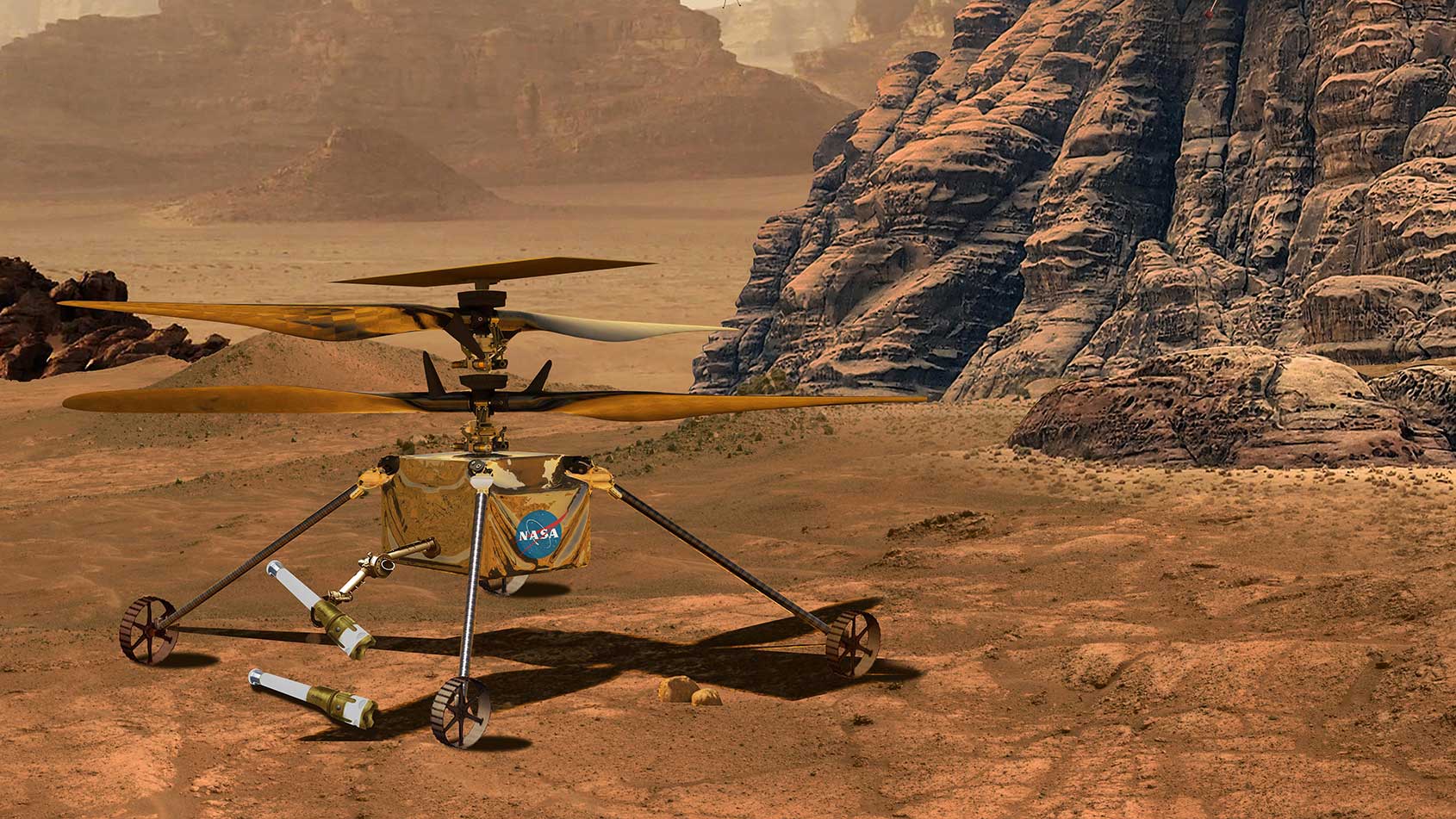UZH Collaborates with NASA JPL to Pioneer Advanced Mars Science Helicopter

Three years have passed since the Ingenuity, the first helicopter to achieve powered autonomous flight on another planet, set foot on the red planet. While Ingenuity demonstrated the viability of camera-based navigation in Mars’ thin atmosphere, the Mars Science Helicopter (MSH) will target unprecedented areas, including the towering Valles Marineris canyon, with height differences of up to 8,000 meters, and lava tubes that could harbor ice – key to understanding Mars’s potential for past or present life.
To tackle the challenges of Mars’s rugged landscapes, the Mars Science Helicopter mission introduces Mid-Air Helicopter Deployment, an innovative method using jet-pack technology. Instead of landing on uneven ground, the helicopter will be released during the descent of the back shell and use a jetpack to slow down. This mid-air delivery will enable the helicopter to bypass ground obstacles and minimize risks during deployment, enabling access to scientifically rich and previously inaccessible regions to land, like steep cliffs or lava tube openings.
Two innovations stemming from UZH
“The collaboration between the UZH’s Robotics and Perception Group and NASA JPL brings two key innovations: advanced navigation algorithms and event-camera technology,” says group leader Davide Scaramuzza.
These advanced navigation algorithms allow the helicopter to accurately determine its position in uneven, unpredictable terrains like Martian canyons and lava tubes. By integrating visual and inertial data, the algorithm ensures reliable navigation without GPS, a critical step for autonomous exploration on Mars.
Event-camera technology, a super-fast camera invented by UZH Prof. Tobi Delbruck, works similarly to the human eye and is ideal for navigating in low-light and high-dynamic-range conditions, as found at the entrance of lava tubes. The new camera technology reduces motion blur and increases endurance, making it ideal for exploring the dark and complex interiors of Martian lava tubes and adapting to unpredictable conditions.
“The 2030 Mars Science Helicopter mission will explore environments that could not only shed light on Mars’s geological history but may also be crucial for future human missions,” says Scaramuzza. “We started the collaboration in 2020. The NASA Jet Propulsion Laboratory approached us directly”.
Jeff Delaune, Robotics Technologist in the Aerial Mobility Group of NASA Jet Propulsion Laboratory, is currently visiting UZH. In addition to meetings with the project partners, he will give a lecture entitled “Robotics Challenges for Planetary Exploration at NASA JPL” on 5 December 2024 at 4:15 pm.